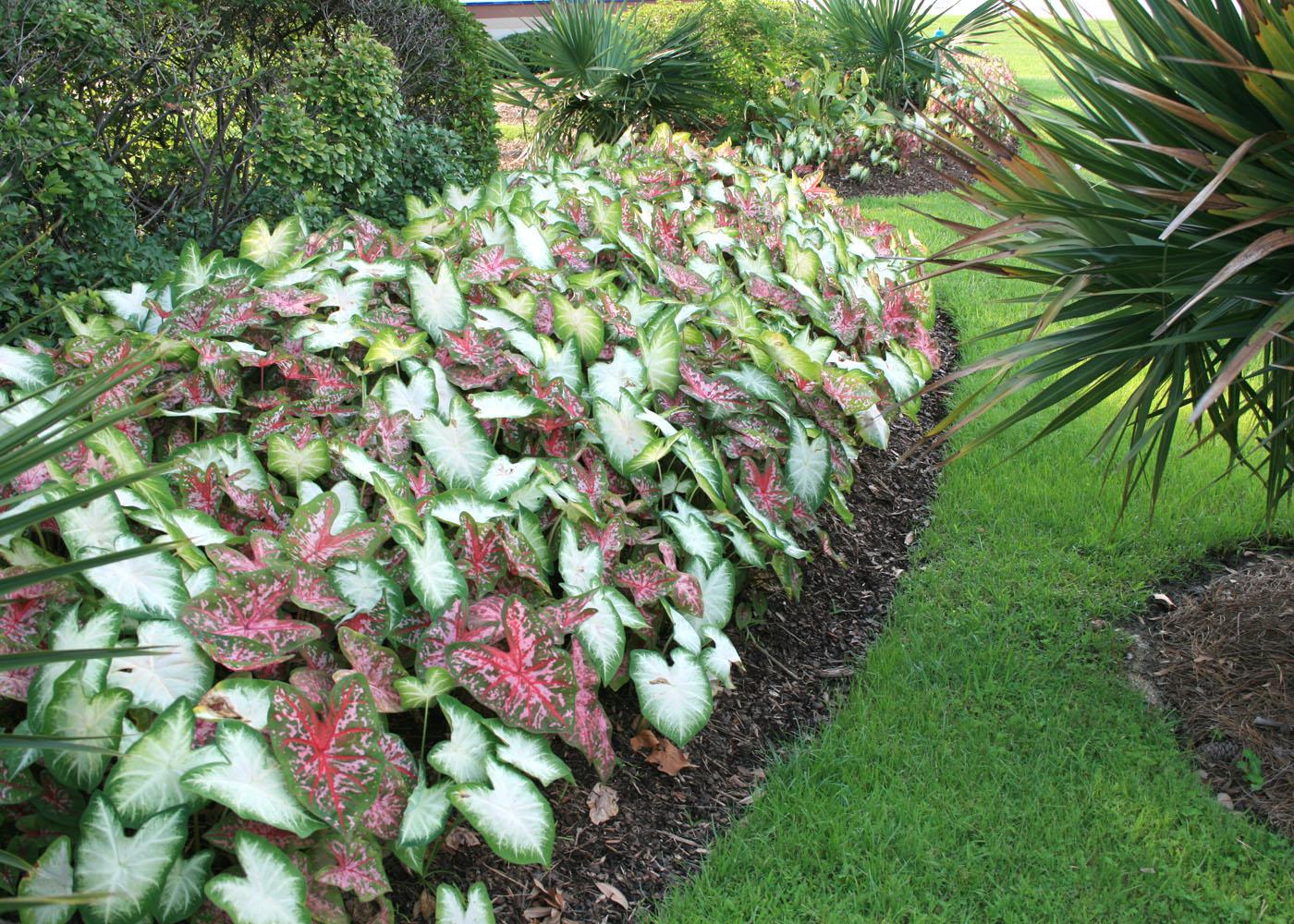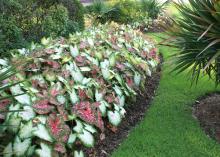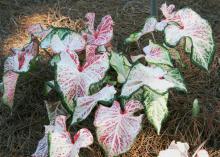Information Possibly Outdated
The information presented on this page was originally released on July 9, 2012. It may not be outdated, but please search our site for more current information. If you plan to quote or reference this information in a publication, please check with the Extension specialist or author before proceeding.
Caladiums bring color into shady landscapes
Shade is an asset during summer’s triple-digit temperatures, but you may find a shady spot in the landscape that needs some color.
If you have shade that is more dark than inviting, consider growing caladium. Caladium should be at the top of your list of shade-loving plants.
Caladiums are tropical foliage plants, native to the Amazon basin of Brazil. These plants are also right at home in our Mississippi gardens and landscapes. They are perfect for planting in front of the green background of foundation shrubs.
Caladiums are grown for their colorful leaves, which can range from solid colors to the most flamboyant color combinations. And best of all, caladiums are very versatile and tolerate many growing styles.
Use caladiums as filler plants in combination containers or as mass plantings to define border edges and add color in shady beds. I prefer the look of caladiums grown in at least partial shade because of their better color development.
The foliage of a caladium is very distinctive. The midribs on the leaves are often streaked or flashed with color, providing high contrast with the rest of the foliage.
Foliage colors include reds, pinks, whites and greens, all in various shades and combinations. Most foliage is heart-shaped with long petioles, and the plant is considered fancy-leaved. Caladiums can reach up to 30 inches tall.
Colorful caladiums provide a striking contrast with the green foliage of other plants. A fantastic combination is Red Flash caladium planted with spotted dead nettle, purple nemesia and yarrow.
Even during the hottest periods of the summer, caladiums are colorful additions to the landscape. Consistent moisture is the key to their performance during these hot summer months.
Plant all caladiums in fertile, well-drained soil. Mulch when they are transplanted to keep the soil moist and cool. Add 3 to 4 inches of high-quality mulch to improve even the most compacted clay soil.
Many garden centers offer caladiums already growing in containers, making it easy to add these colorful plants to your landscape. Plant caladiums about 12 inches apart and no deeper than the top of the pot. They can be effective as a specimen, but I like caladiums mass-planted, so be sure to bring several home.
Caladiums are grown from tubers, which are planted in the spring after all chance of frost has passed. Plant shallowly in well-amended soil about 6 inches apart.
Caladiums are sensitive to cold weather and should be considered annuals except in the coastal areas of Mississippi, where winters are mild.
The tubers can be saved and replanted next year. Be sure to dig tubers in the fall when the soil temperatures go below 60 degrees. Lightly brush the soil off and remove any foliage. Pack in dry peat moss and store dry at about 60 degrees. Be sure to label and sort by cultivar.










